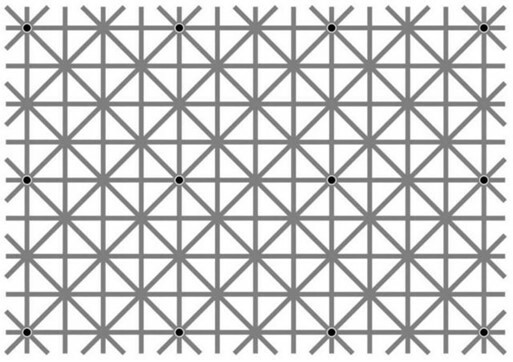One optical illusion that challenges TikTok users' ability to understand has gone viral on the social network recently. The image consists of gray line intersections with dots at their intersections, totaling 12 points.
However, when focusing on one of the points, it becomes impossible to see all the others present in the image. This illusion is known as the “Hermann Grid” or “Grid Illusion” and was published in a scientific article by researchers Jacques Ninio and Kent A Stevens in 2000.
see more
Employee prohibits children from sleeping when they arrive at daycare
8 signs that show that anxiety was present in your…
The logic behind the illusion is that the human brain is not capable of processing all points simultaneously, as it has a limited field of vision. Therefore, it tends to complete the picture looking for patterns and filling in what cannot be seen.
Tips for understanding the illusion
To understand the illusion, it is necessary to fix the gaze on one point and notice how the other points seem to disappear. Furthermore, it is possible to observe that the dots seem to move when we move our gaze over the image.
See right now what the illusion is all about:
- The illusion of dots and lines
Below is an image shared on the social network in which it is possible to see the intersection of 12 points with gray lines. However, when focusing on one of the points, it becomes impossible to see the others, thus manifesting the illusion.

- Origin and name of the illusion
The illusion, known as the “Hermann Grid” or “Grid Illusion”, was first described by Jacques Ninio and Kent A Stevens in a scientific article published in 2000. The figure causing the illusion consists of black squares separated by white lines, forming gray dots at the intersections of the lines.

- Explanation of the illusion
Why can we only see one point among the 12 present in the image? The answer is simple: our brain cannot process all points simultaneously.
Due to the brain's limited field of view, it tends to fill in images looking for patterns. As the predominant pattern in the image is gray lines, our brain ends up filling the image with them.
Therefore, it is important to remember that what we see is not always reality and that our senses can often deceive us. Understanding these illusions can help us better understand how the human brain works and how it interprets the visual information we receive.

